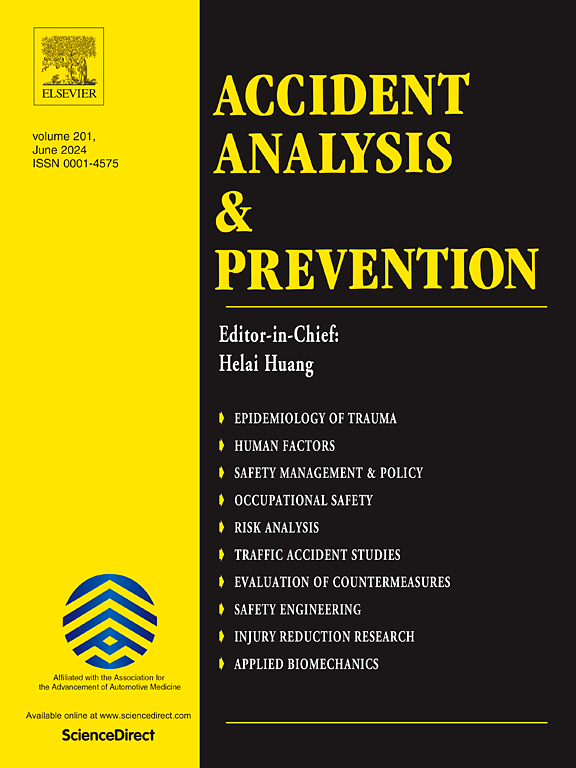A cognitive digital twin approach to improving driver compliance and accident prevention
IF 5.7
1区 工程技术
Q1 ERGONOMICS
引用次数: 0
Abstract
Advanced Driver Assistance Systems (ADAS) are crucial for enhancing driving safety by alerting drivers to unrecognized risks. However, traditional ADAS often fail to account for individual decision-making processes, including drivers’ perceptions of the environment and personal driving styles, which can lead to non-compliance with the provided assistance. This paper introduces a novel Cognitive-Digital-Twin-based Driving Assistance System (CDAS), leveraging a personalized driving decision model that dynamically updates based on the driver’s control and observation actions. By incorporating these individual behaviors, CDAS can tailor its assistance options to predict and adapt to the driver’s responses across various scenarios, ensuring both the necessity and safety of its interventions. Through two comprehensive experimental validations, we demonstrate that the cognitive digital twin (CDT) closely aligns with actual driver observation behaviors. By incorporating additional driver observation actions – an input not readily leveraged by data-driven methods without large annotated datasets – the CDT also achieves superior lane-changing predictions compared to deep learning classifiers relying solely on environmental states. Furthermore, CDAS significantly outperforms traditional ADAS in terms of risk reduction and user acceptance, showcasing its potential to enhance driving safety and adaptability effectively. These findings suggest that CDAS represents a substantial advancement towards more personalized and effective driving assistance.
一个认知数字孪生方法,以提高驾驶员合规性和事故预防。
先进驾驶辅助系统(ADAS)通过提醒驾驶员注意未被识别的风险,对提高驾驶安全至关重要。然而,传统的ADAS往往不能考虑到个人的决策过程,包括司机对环境的看法和个人驾驶风格,这可能导致不遵守所提供的帮助。本文介绍了一种基于认知-数字孪生的新型驾驶辅助系统(CDAS),该系统利用基于驾驶员控制和观察行为动态更新的个性化驾驶决策模型。通过整合这些个体行为,CDAS可以定制其辅助方案,以预测和适应驾驶员在各种情况下的反应,确保其干预的必要性和安全性。通过两个综合实验验证,我们证明了认知数字孪生(CDT)与实际驾驶员观察行为密切相关。与仅依赖环境状态的深度学习分类器相比,通过合并额外的驾驶员观察动作(没有大型注释数据集的数据驱动方法不容易利用的输入),CDT还实现了更好的变道预测。此外,在降低风险和用户接受度方面,CDAS明显优于传统ADAS,显示了其有效提高驾驶安全性和适应性的潜力。这些发现表明,CDAS代表着朝着更个性化和更有效的驾驶辅助迈出了实质性的一步。
本文章由计算机程序翻译,如有差异,请以英文原文为准。
求助全文
约1分钟内获得全文
求助全文
来源期刊

Accident; analysis and prevention
Multiple-
CiteScore
11.90
自引率
16.90%
发文量
264
审稿时长
48 days
期刊介绍:
Accident Analysis & Prevention provides wide coverage of the general areas relating to accidental injury and damage, including the pre-injury and immediate post-injury phases. Published papers deal with medical, legal, economic, educational, behavioral, theoretical or empirical aspects of transportation accidents, as well as with accidents at other sites. Selected topics within the scope of the Journal may include: studies of human, environmental and vehicular factors influencing the occurrence, type and severity of accidents and injury; the design, implementation and evaluation of countermeasures; biomechanics of impact and human tolerance limits to injury; modelling and statistical analysis of accident data; policy, planning and decision-making in safety.
 求助内容:
求助内容: 应助结果提醒方式:
应助结果提醒方式:


